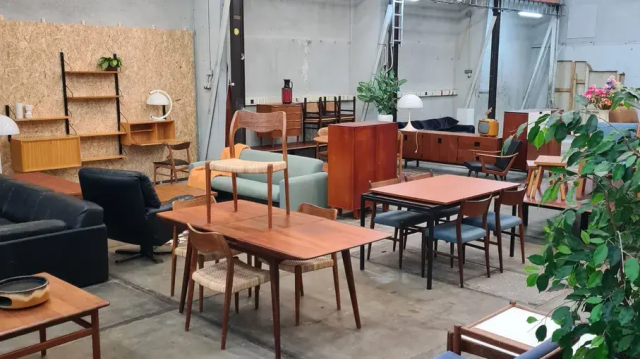Furniture in Europe has always carried more weight than just being something to sit on. It's tied to culture, habits, even identity. Some designs vanish after a season, but others hang on. They get reused, re-imagined, and suddenly they're back in homes again. Dutch tubular steel chairs are one example, dining seats across the continent another, and then, of course, the whole mid-century modern wave that never really left.
Gispen Design Stoelen
Think about the Dutch classic—Gispen Design Stoelen. First made in the early 20th century, built with tubular steel and simple seats. At first glance, they look too basic. Almost cold. But sit in one for a while, and you get why it works. They were designed to be light, sturdy, and practical, not to impress with decoration. What's surprising is how they still feel current. Some are sold as vintage, fetching high prices. Others are new, straight from factories, still making them in the same style. That says something about design that doesn't age. Once it solves a real need, it doesn't have to change much.
Dining Room Chairs Europe
Then there's food culture. Look up Dining Room Chairs Europe and you'll see how different regions treat them. In Italy or Spain, chairs are heavier, made of solid wood, and built for long meals. In Scandinavia, the chairs are lighter, stripped back, and ergonomic. Different looks, same purpose: people sitting together for hours. In modern flats, a dining chair isn't just for meals anymore. It doubles as a work chair, sometimes even a spare seat for guests. Designers know this, so they experiment—bentwood, plastics, slim steel. Chairs that move easily, last through daily usage, and do not feel out of place at the table/the desk!
Mid-Century Modern Furniture
This is Mid-Century Modern Furniture. Born after World War II, when households needed something affordable but fresh. Clean lines, fiberglass shells, tapered legs, molded plywood! Names like Eames, Jacobsen, and Panton are still talked about. It's everywhere now. Originals are expensive, reproductions common. Why? Because the style adapts. A mid-century chair looks right in a modern loft but doesn't clash with a traditional home either. That flexibility keeps it alive.
Why These Designs Stick
So why do these survive? They solved everyday problems. Gispen chairs were affordable and strong. Dining chairs in Europe mirrored culture and long meals. Mid-century modern gave homes warmth without excess cost. None of them were designed as passing trends. Another reason—they balance looks with use. Too much focus on style, and a chair becomes a sculpture. Too much focus on utility, and it becomes invisible. These designs landed somewhere in between, and that's why people keep returning to them.
Looking Ahead
Furniture trends talk about recycling, sustainability, and modular systems. It is fine, and will shape what comes next. But the older examples do not vanish. They stay in houses, in offices, in second-hand shops, waiting for someone to pick them up. That's the thing about good design—it circles back. It doesn't need to shout to stay relevant. It just fits into life, again and again.
For more information, you can visit our website https://bebob.eu/en/ or call us at +31614897169








